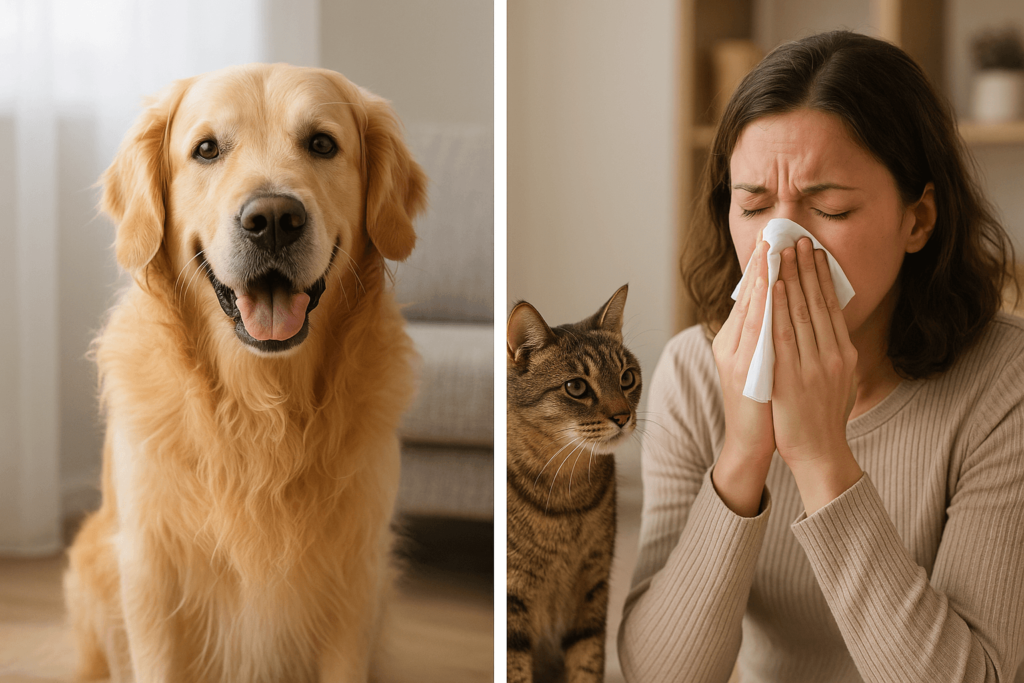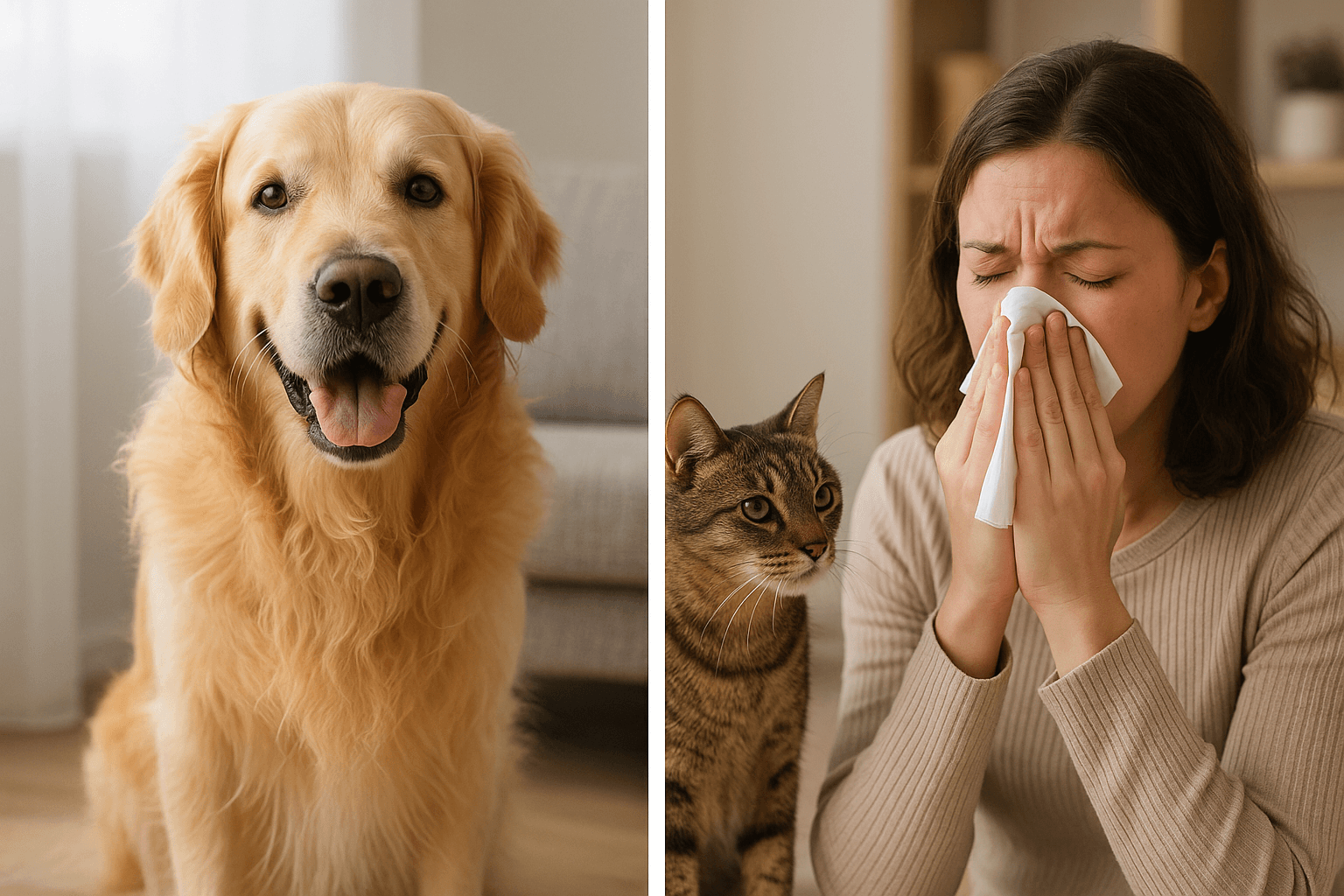Dog vs Cat Allergies: What You Need to Know
Pet allergies are a common concern for many households, and the debate between dog and cat allergies often leaves potential pet owners wondering which furry companion is the better choice. While both dogs and cats can trigger allergic reactions, understanding the differences in allergens, symptoms, and management strategies can help you make an informed decision. Whether you’re considering adopting a pet or already share your home with one, this guide will explore the science behind dog and cat allergies, their effects on health, and practical tips for coexisting comfortably with your beloved animal companions.
Understanding the Causes of Dog and Cat Allergies
Allergic reactions to pets stem from specific proteins found in their skin, saliva, and urine. However, the type and concentration of these allergens differ between dogs and cats, influencing the severity and frequency of symptoms. Here’s what you need to know about the causes of these allergies:
Protein Sources in Cats:
The primary allergen in cats, Fel d 1, is produced in their sebaceous glands and saliva. This protein is highly potent and easily becomes airborne through shedding fur.Protein Sources in Dogs:
Dogs produce several allergens, such as Can f 1 and Can f 2, primarily found in their dander, saliva, and urine. These proteins tend to be less widespread than those from cats.Dander Differences:
Both species shed dander (dead skin flakes), but cats generally produce finer particles that linger in the air longer, increasing exposure risk.Saliva and Grooming Habits:
Cats groom themselves more frequently than dogs, spreading allergenic proteins across their fur and amplifying the allergen load in your home.Environmental Spread:
Pet allergens can attach to clothing, furniture, and carpets, making them difficult to eliminate even if the pet isn’t present in a room.
By understanding the sources of these allergens, you can take targeted steps to minimize their impact on your daily life.

Symptoms of Dog and Cat Allergies
The symptoms of dog and cat allergies overlap significantly, though their intensity may vary depending on the individual and the pet involved. Recognizing these signs can help you identify and address the issue promptly.
Respiratory Issues:
Sneezing, nasal congestion, and wheezing are common symptoms triggered by inhaling airborne allergens.Skin Reactions:
Direct contact with pet allergens can cause itching, redness, or hives in sensitive individuals.Eye Irritation:
Watery, itchy, or swollen eyes often accompany exposure to pet dander, especially in enclosed spaces.Asthma Exacerbation:
For people with asthma, pet allergens can worsen symptoms like chest tightness and difficulty breathing.Chronic Fatigue:
Prolonged exposure to allergens may lead to fatigue or a general feeling of being unwell due to constant immune system activation.
If you experience any of these symptoms, it’s important to consult a healthcare professional to confirm whether pets are the source and discuss appropriate solutions.
Check this guide 👉Cat Bite vs Dog Bite: Best 7 Expert Tips!
Check this guide 👉Cat vs Dog Senses: Best 7 Expert Tips!
Check this guide 👉Cat Paws vs Dog Paws: Best 7 Expert Tips!
Managing Dog Allergies | Managing Cat Allergies |
|---|---|
Bathe your dog regularly | Use HEPA filters to reduce airborne allergens |
Keep pets out of bedrooms | Clean surfaces and fabrics frequently |
Vacuum with allergen-trapping bags | Wash cat bedding weekly |
Limit carpeting in the home | Consider low-allergen cat breeds |
Groom pets outdoors | Wipe down cats with damp cloths |
Low-Allergen Pets: Myths and Realities
While no dog or cat breed is completely hypoallergenic, some animals produce fewer allergens than others. If you’re prone to allergies but still want a furry friend, consider these insights before choosing a pet.
Myth of Hypoallergenic Breeds:
Breeds marketed as “hypoallergenic” may produce fewer allergens, but they are not entirely free of them. Individual reactions can vary widely.Low-Shedding Dogs:
Breeds like poodles and bichon frises shed less dander, reducing allergen spread in the home.Low-Dander Cats:
Some cat breeds, such as the Siberian and Balinese, are believed to produce lower levels of Fel d 1 protein compared to others.Regular Grooming Helps:
Frequent bathing and brushing can reduce allergen buildup on pets, though excessive grooming may stress the animal.Adopting Older Pets:
Adult pets often settle into routines quickly and may emit fewer allergens than energetic puppies or kittens.
Choosing a low-allergen pet requires careful consideration of both breed traits and personal sensitivities.
Practical Tips for Living with Allergies and Pets
Living with pet allergies doesn’t mean giving up your dream of owning a dog or cat. With thoughtful planning and consistent effort, you can create a harmonious environment for everyone.
Create Allergy-Free Zones:
Designate certain areas, such as bedrooms, as off-limits to pets to minimize exposure during sleep.Invest in Air Purifiers:
High-efficiency particulate air (HEPA) purifiers trap allergens and improve indoor air quality.Clean Regularly:
Dust, vacuum, and mop floors frequently to remove accumulated dander and allergens.Wear Protective Gear:
Use gloves and masks when cleaning or handling pets to reduce direct contact with allergens.Consult an Allergist:
Allergy shots or medications can desensitize your immune system over time, making pet ownership more manageable.
With these strategies, you can enjoy the companionship of a pet while keeping allergy symptoms under control.
Common Misconceptions About Pet Allergies
Misinformation about pet allergies can lead to unnecessary stress or poor decision-making. Clearing up these misconceptions helps foster a better understanding of how to live harmoniously with pets.
“Hypoallergenic Pets Don’t Exist”:
While true hypoallergenic pets don’t exist, some breeds produce fewer allergens, making them better choices for sensitive individuals.“Only Fur Causes Allergies”:
Contrary to popular belief, fur itself isn’t the primary culprit—it’s the proteins in dander, saliva, and urine that trigger reactions.“Allergies Are Immediate”:
Symptoms may take weeks or months to appear after prolonged exposure, making them harder to associate with pets initially.“Small Pets Cause Fewer Allergies”:
Size has little to do with allergen production; smaller pets can still produce significant amounts of dander and saliva.“Removing the Pet Solves Everything”:
Allergens can linger in homes for months after a pet leaves, requiring thorough cleaning to eliminate traces.
Dispelling these myths empowers you to approach pet ownership with realistic expectations and effective strategies.
How to Transition Into Pet Ownership with Allergies
For allergy sufferers eager to adopt a pet, transitioning carefully can ease the adjustment period and reduce discomfort. Follow these steps to ensure a smooth start:
Spend Time Around Similar Pets First:
Visit friends or shelters with similar breeds to gauge your reaction before committing.Prepare Your Home in Advance:
Stock up on air purifiers, allergen-proof bedding, and cleaning supplies to create a welcoming space.Start Slowly with Limited Exposure:
Allow gradual interactions with your new pet to build tolerance and monitor symptoms closely.Establish Cleaning Routines Early:
Set aside time each week for deep cleaning to prevent allergens from accumulating.Communicate with Family Members:
Ensure everyone understands the importance of adhering to allergy management practices for collective success.
Taking these proactive measures sets the stage for a successful and fulfilling pet ownership journey.
Benefits of Owning a Pet Despite Allergies
While pet allergies pose challenges, the emotional and physical benefits of pet ownership often outweigh the drawbacks. Here’s why embracing a pet—even with allergies—can enrich your life:
Improved Mental Health:
Studies show that pets reduce stress, anxiety, and depression, offering invaluable emotional support.Increased Physical Activity:
Dogs encourage regular walks and outdoor activities, promoting a healthier lifestyle.Enhanced Social Connections:
Pets serve as social catalysts, helping owners connect with fellow animal lovers.Boosted Immune System in Children:
Early exposure to pets may strengthen children’s immune systems and reduce the risk of developing allergies later in life.Unconditional Love and Companionship:
The bond between humans and pets fosters loyalty and unconditional affection, creating lifelong memories.
Despite the hurdles, the rewards of pet ownership make overcoming allergies well worth the effort.
Frequently Asked Questions About Dog and Cat Allergies
Can I develop allergies after years of owning a pet?
Yes, allergies can develop at any time, even if you’ve lived with a pet for years without issues.
Are there treatments for pet allergies?
Antihistamines, nasal sprays, and immunotherapy (allergy shots) can help manage symptoms effectively.
Do short-haired pets cause fewer allergies?
Hair length doesn’t determine allergen production; it’s the dander, saliva, and urine that trigger reactions.
How do I test my allergies to specific pets?
Skin prick tests or blood tests conducted by an allergist can identify specific triggers.
Is it safe to adopt a pet if I have mild allergies?
Yes, with proper precautions and management strategies, many people with mild allergies can successfully live with pets.
Finding Balance Between Pets and Allergies
Deciding between a dog or cat when dealing with allergies doesn’t have to be an either-or scenario. By understanding the root causes of pet allergies, recognizing symptoms early, and implementing effective management techniques, you can enjoy the joy and companionship of a four-legged friend without compromising your health. Whether you choose a low-allergen breed, invest in air purifiers, or establish allergy-free zones, the key lies in finding a balance that works for you and your household. Remember, love and preparation go hand-in-hand when building a happy, healthy relationship with your pet.
Understanding Cryptosporidium in Cats: Best 7 Expert Tips! – Spot symptoms, treat safely, and stop parasite spread in your home.
Understanding Cryptosporidium in Dogs: Best 7 Expert Tips! – Learn symptoms, treatment & prevention for this stubborn gut parasite.
Understanding Syringomyelia in Cats: Best 7 Expert Tips! – Recognize signs, manage pain, and support your cat’s neurological health with vet-backed guidance.
Understanding Syringomyelia in Dogs: Best 7 Expert Tips! – Expert insights on symptoms, MRI diagnosis, pain management & quality of life.





